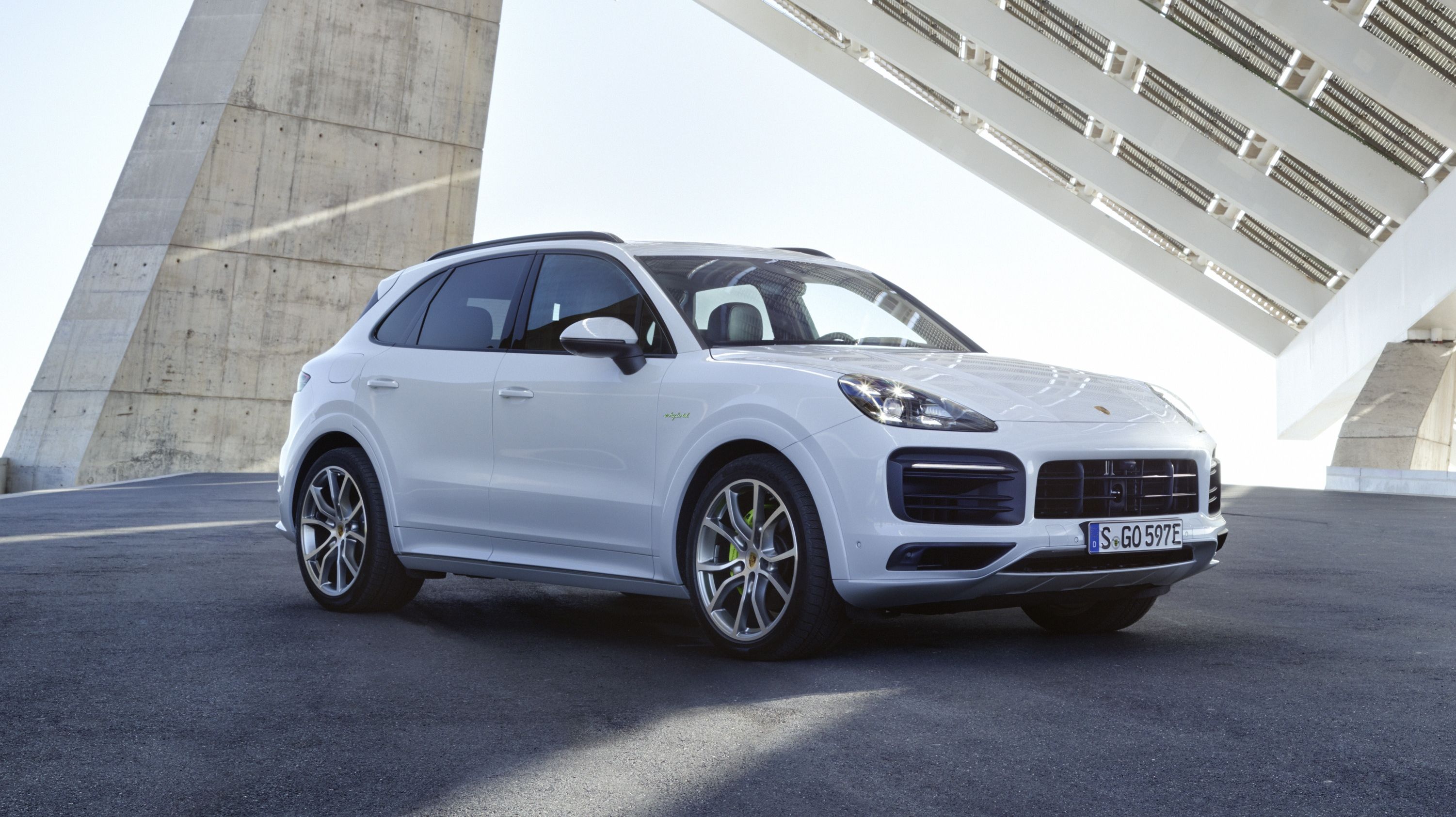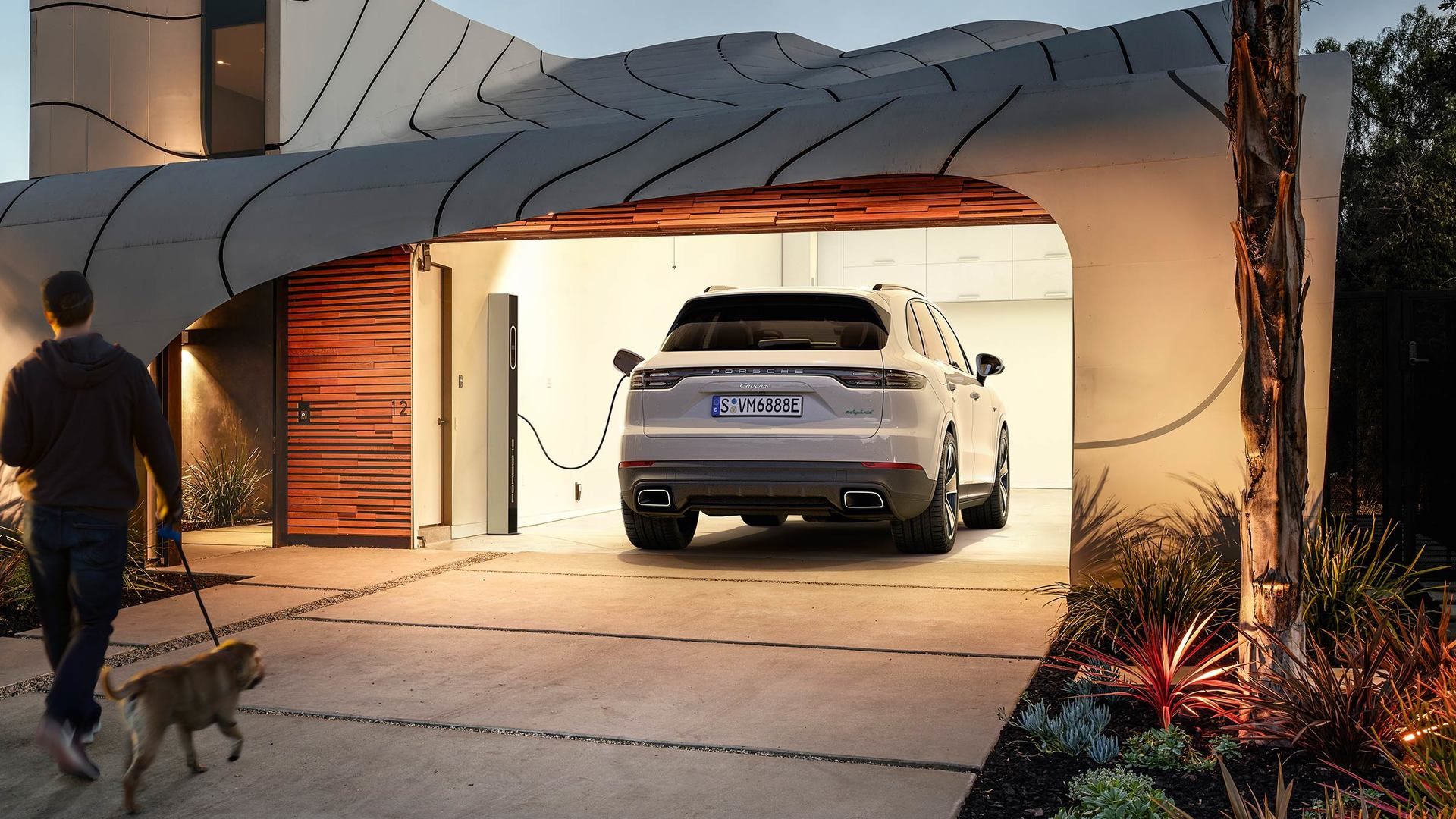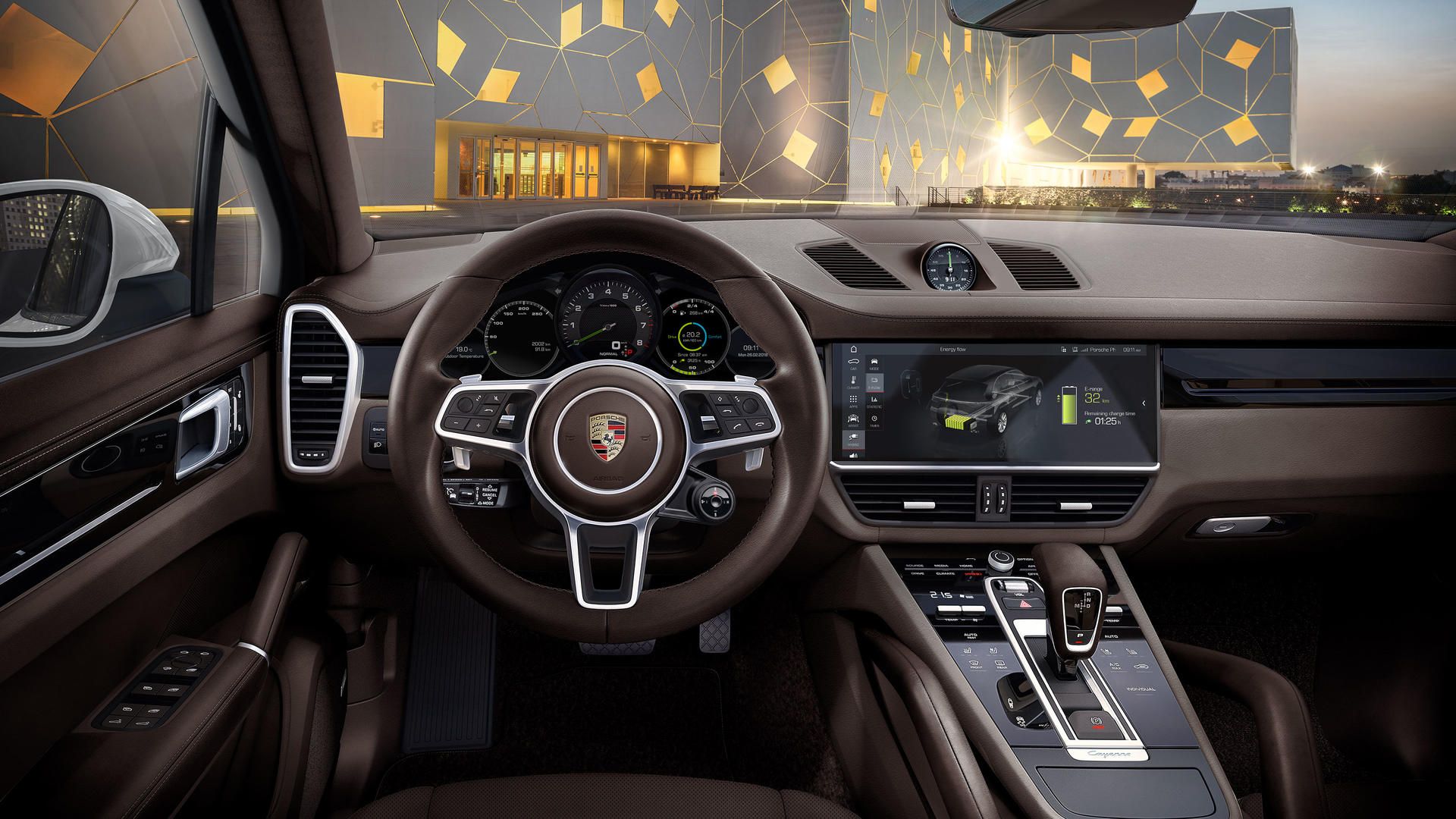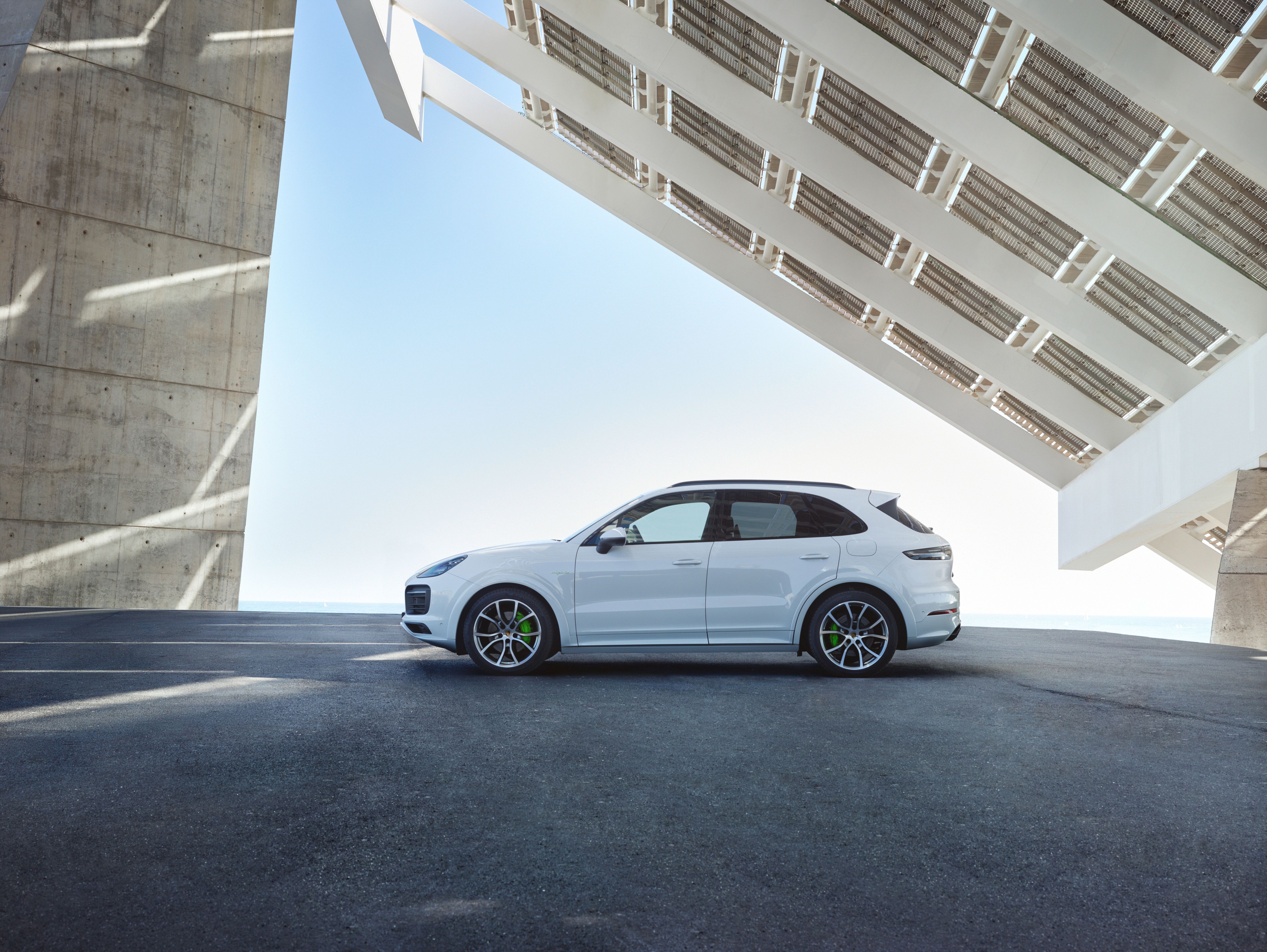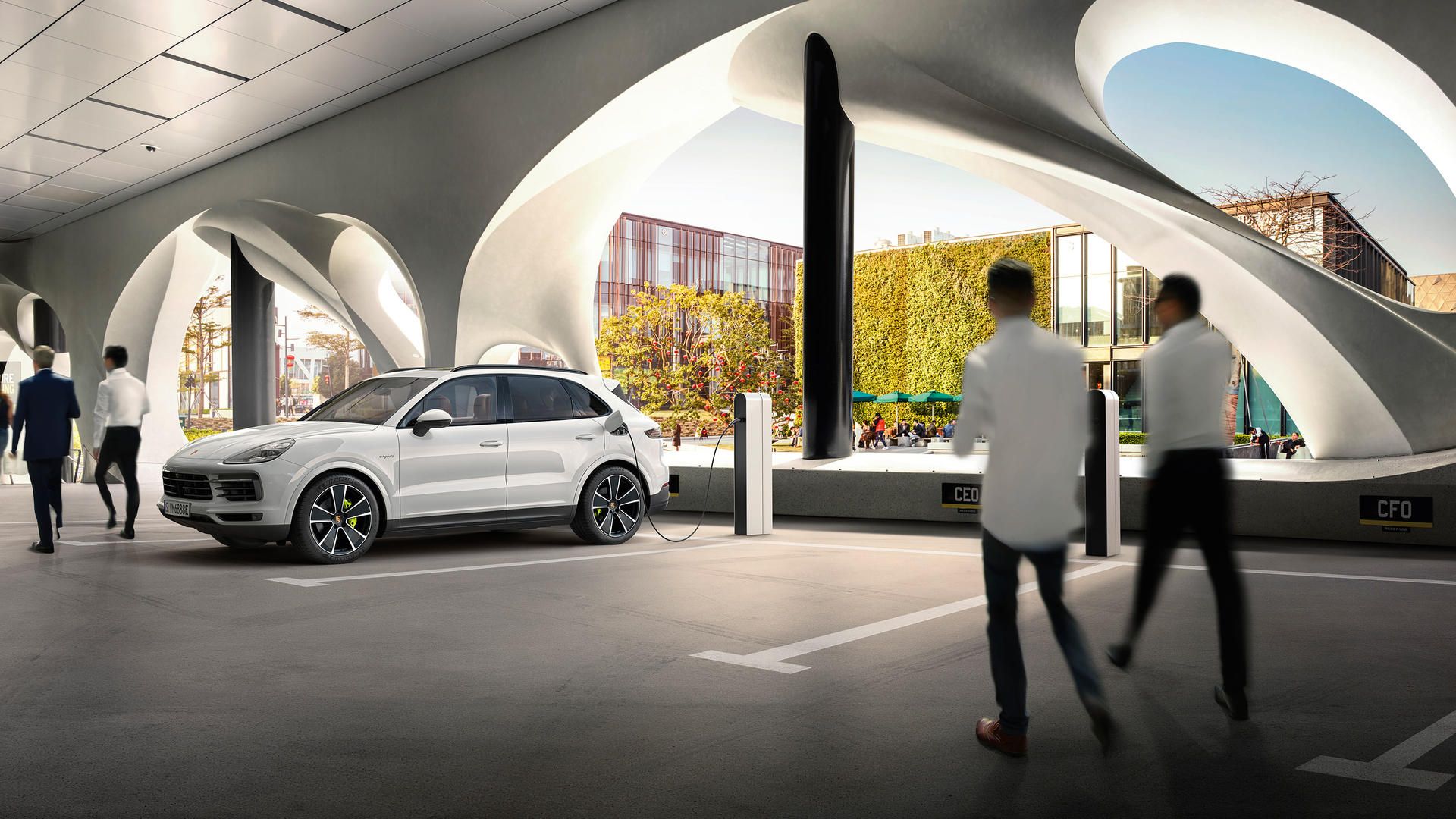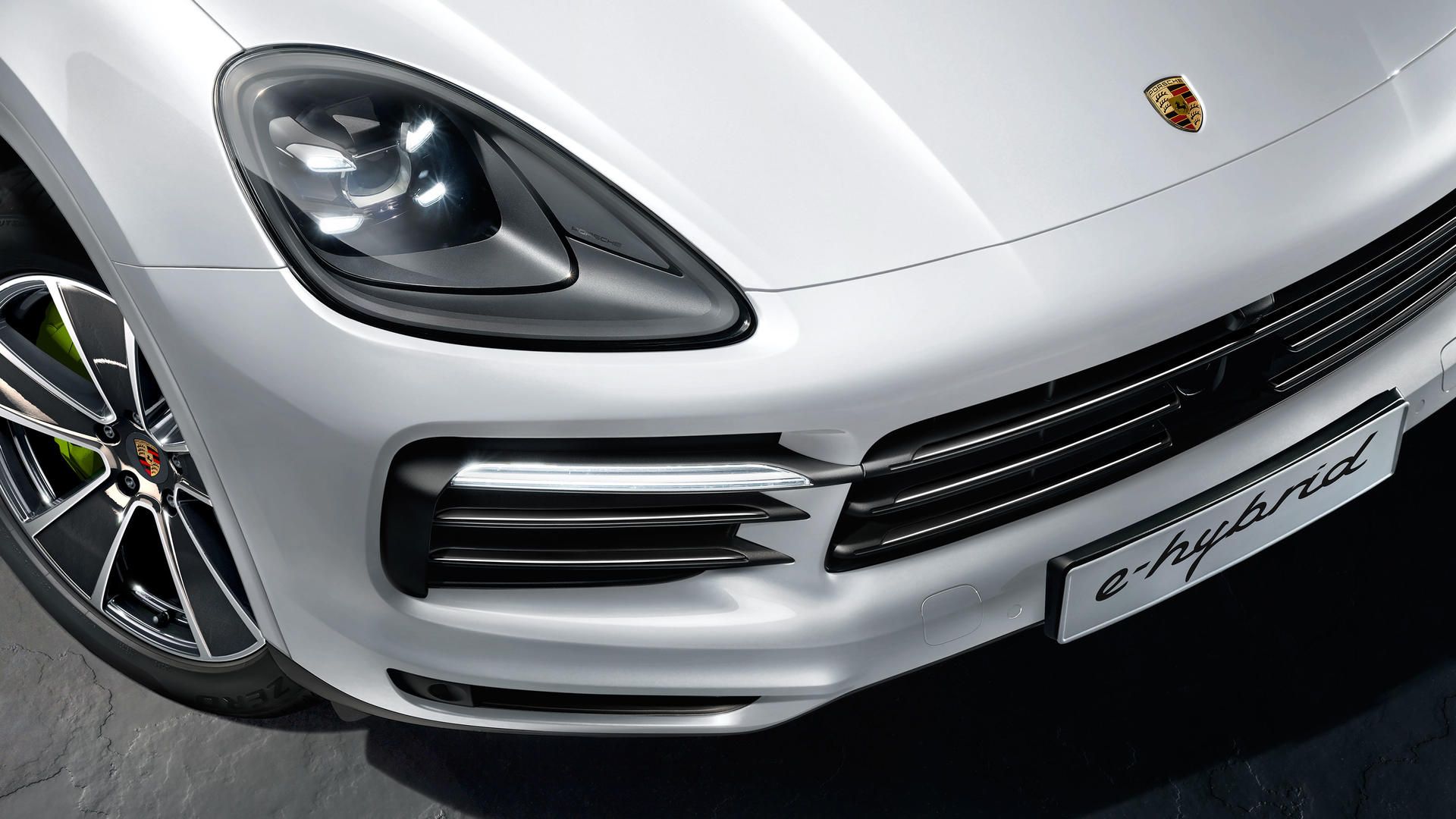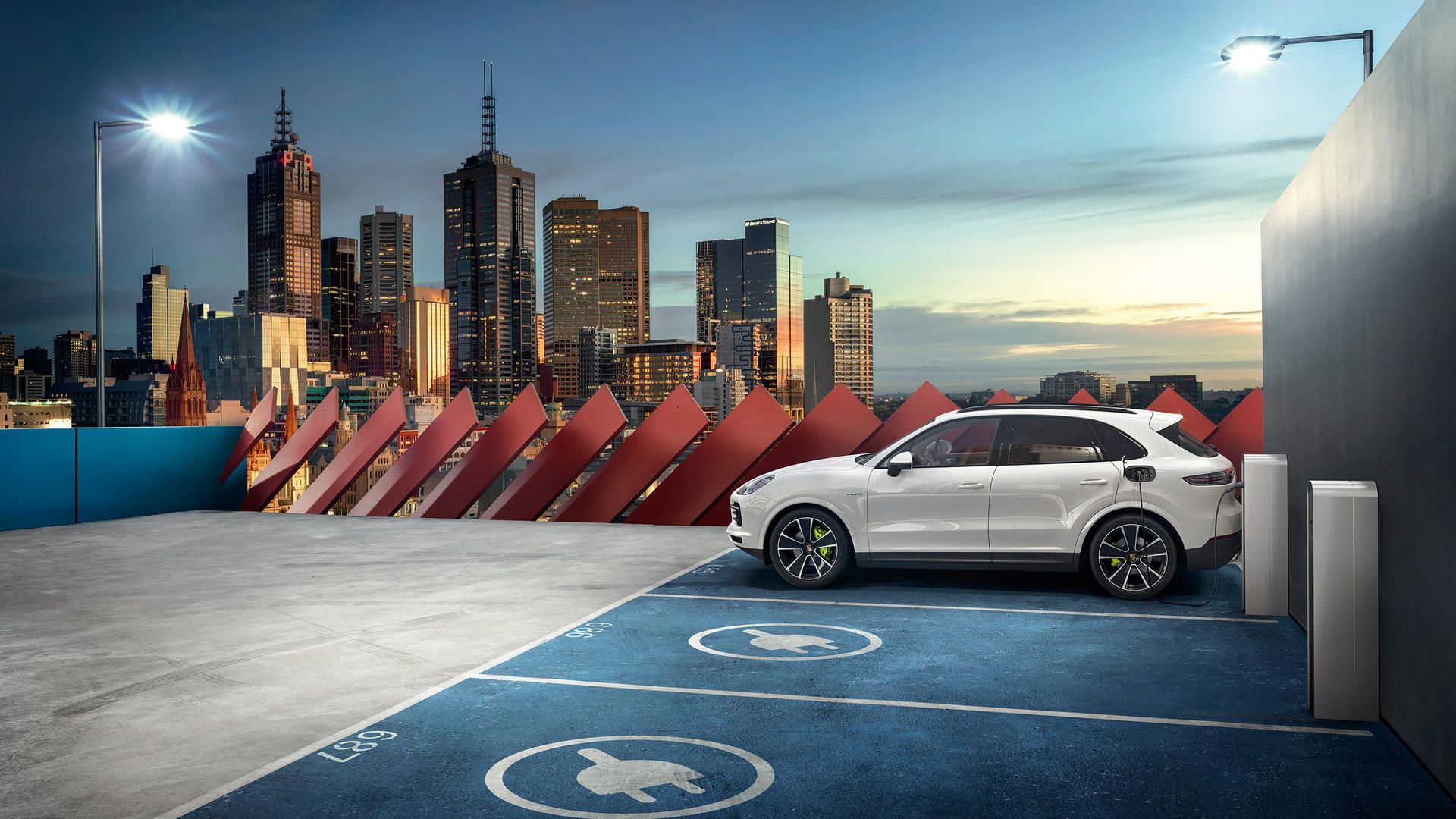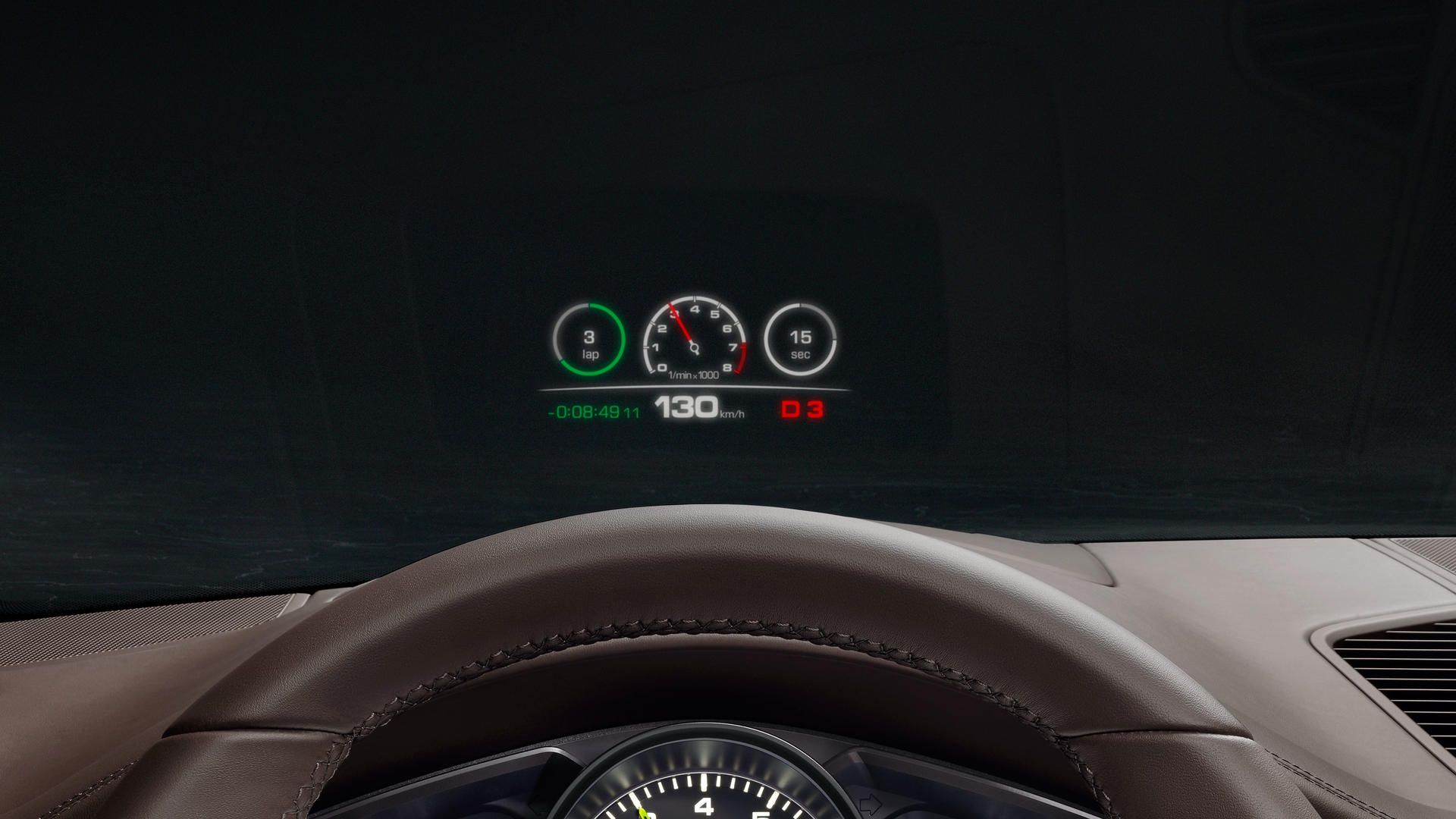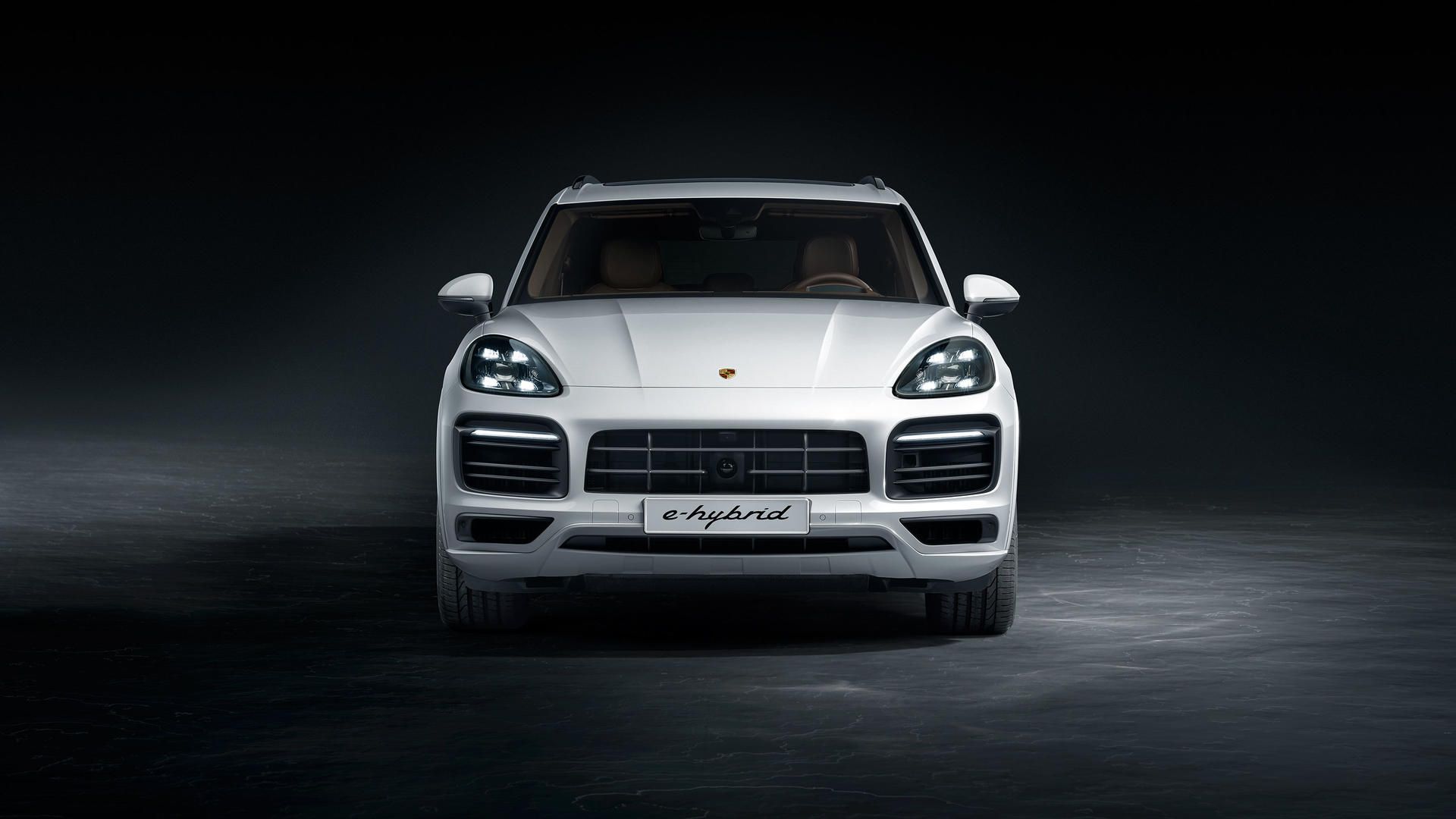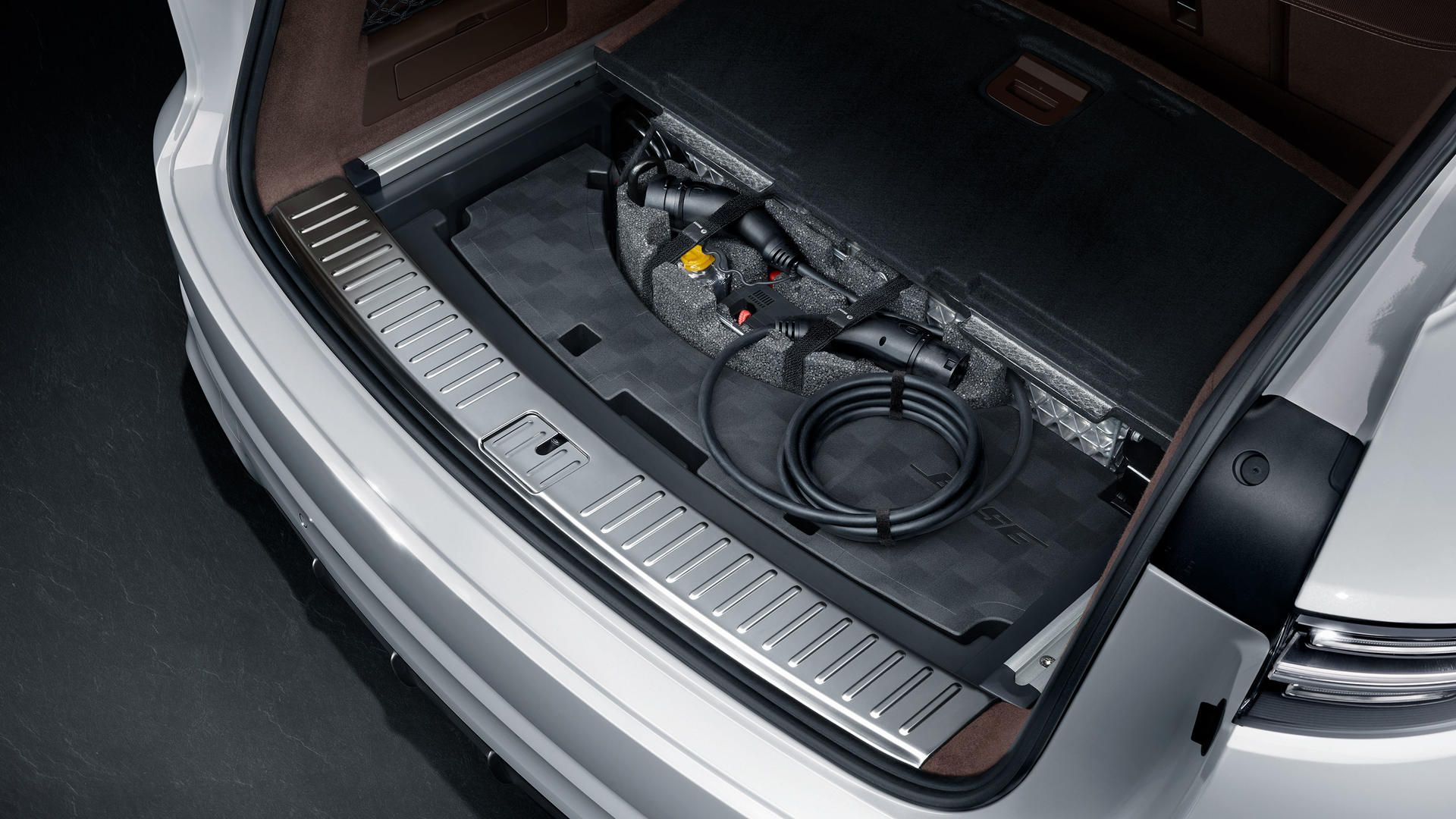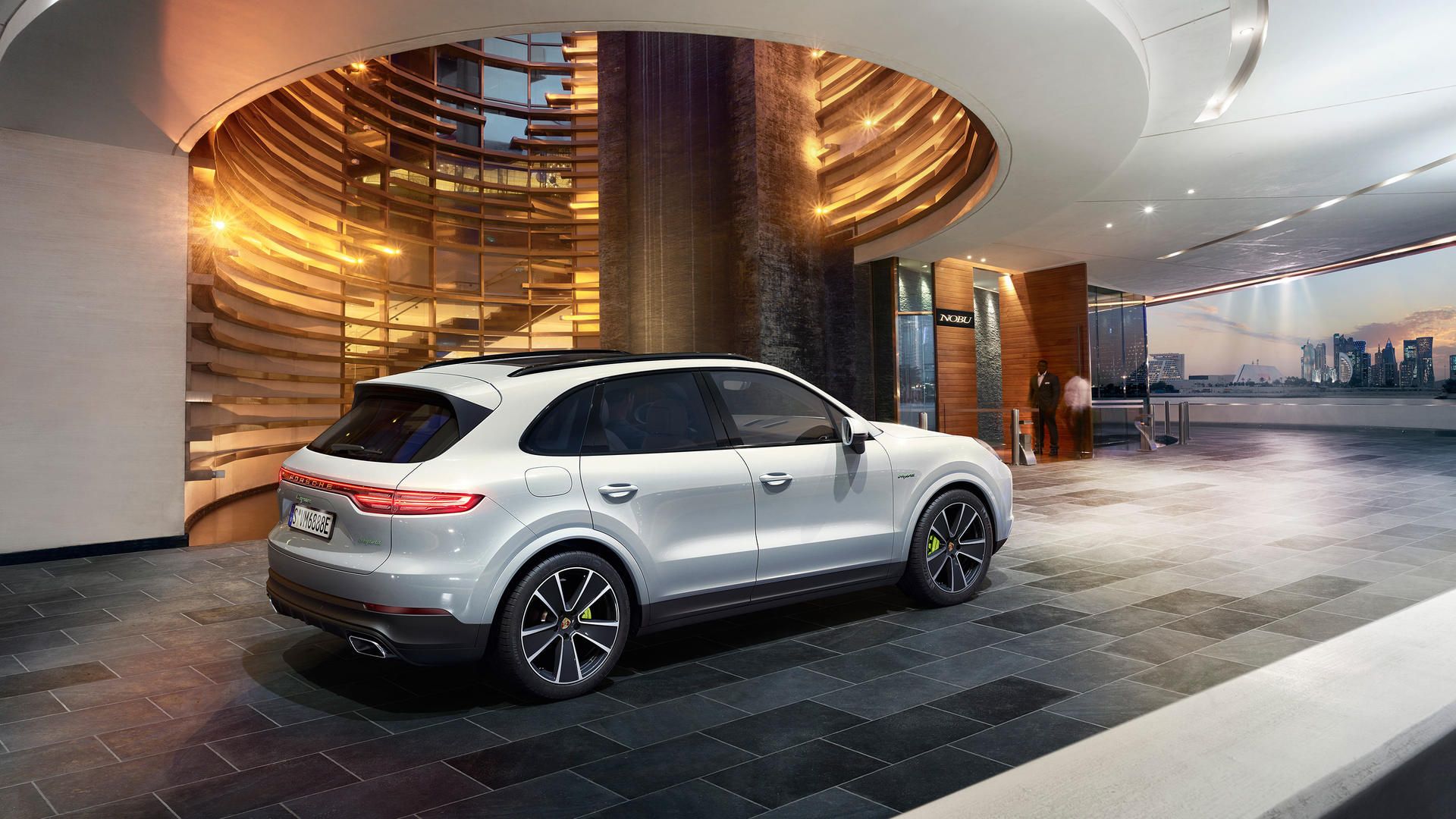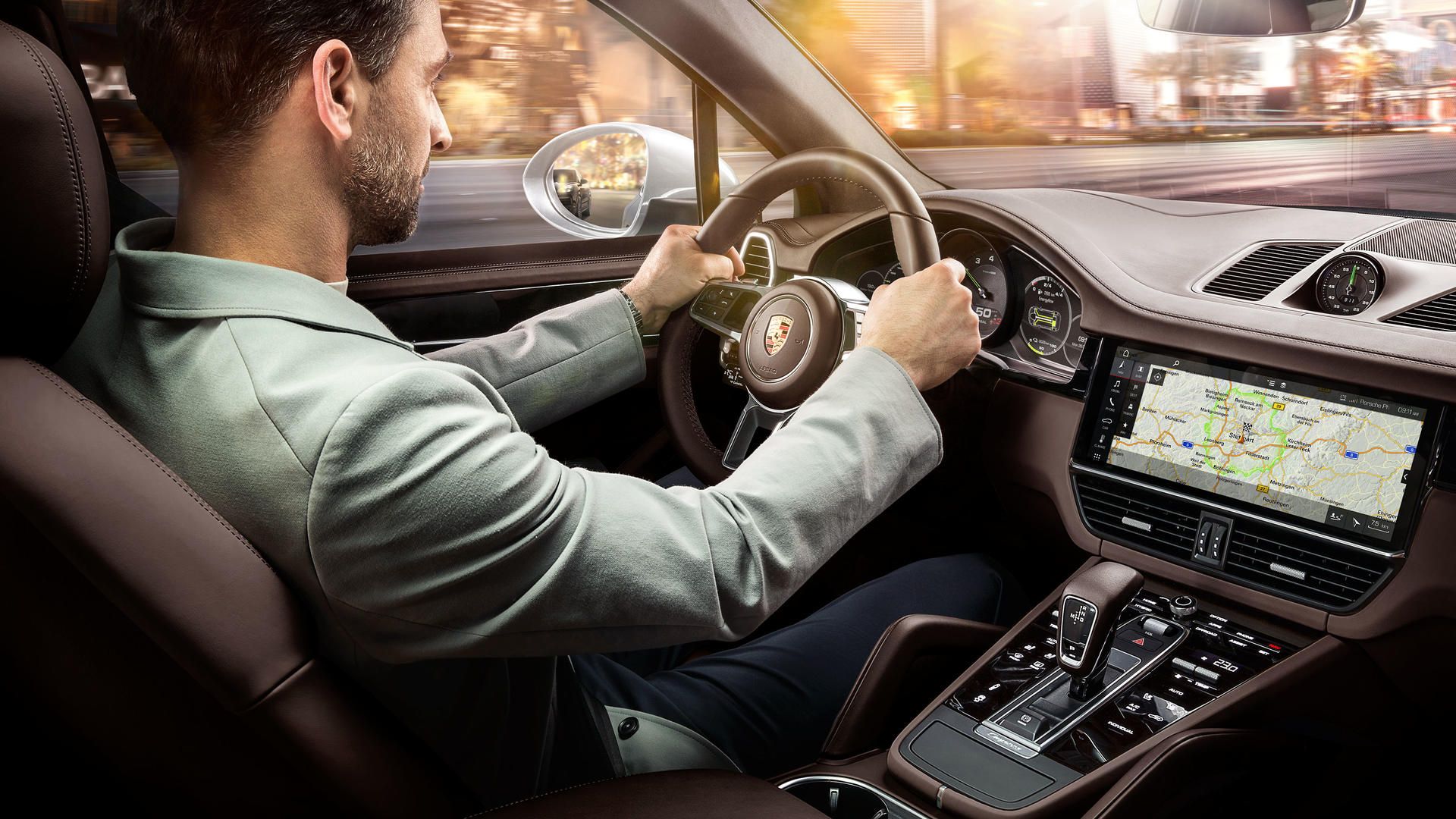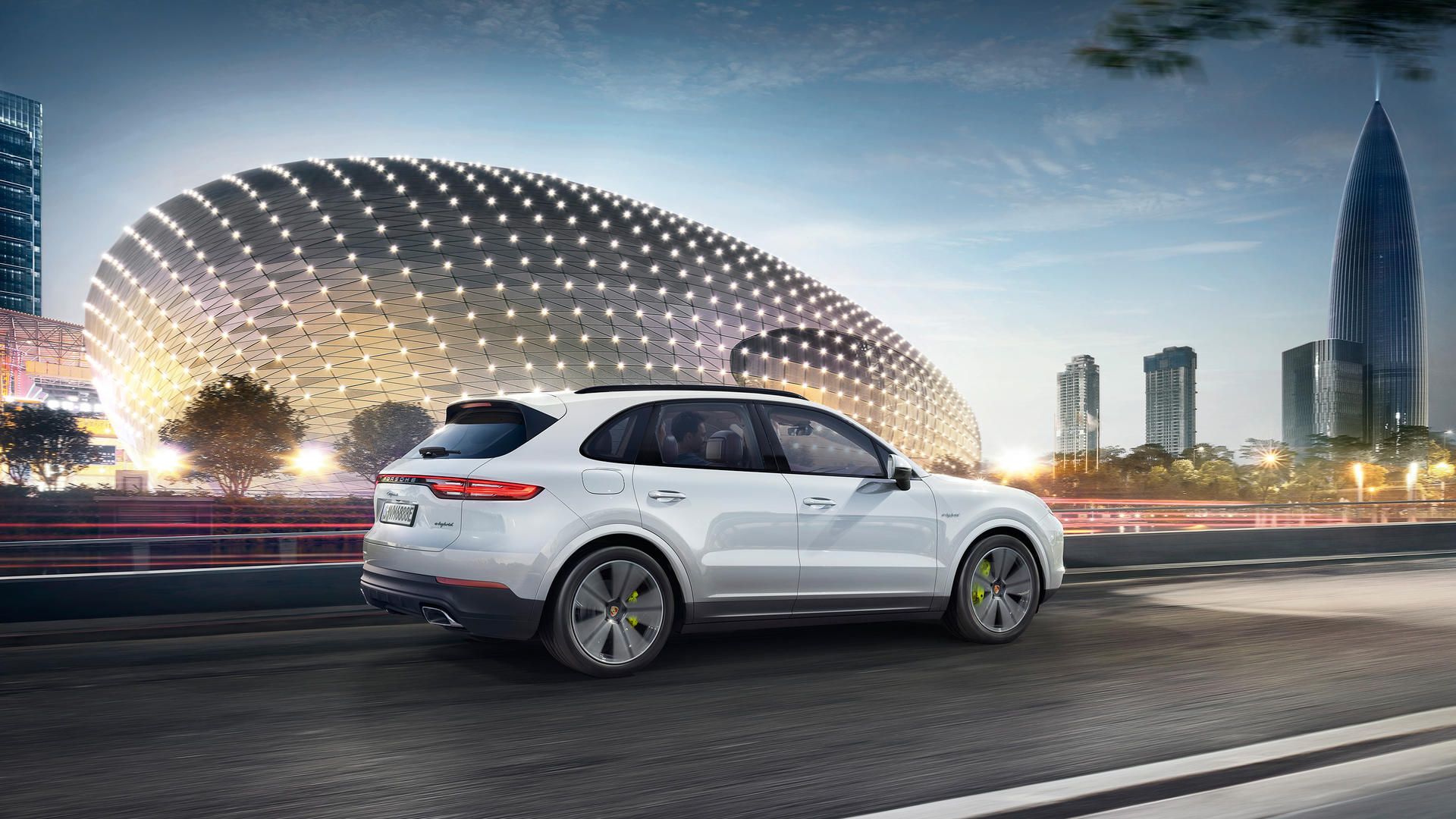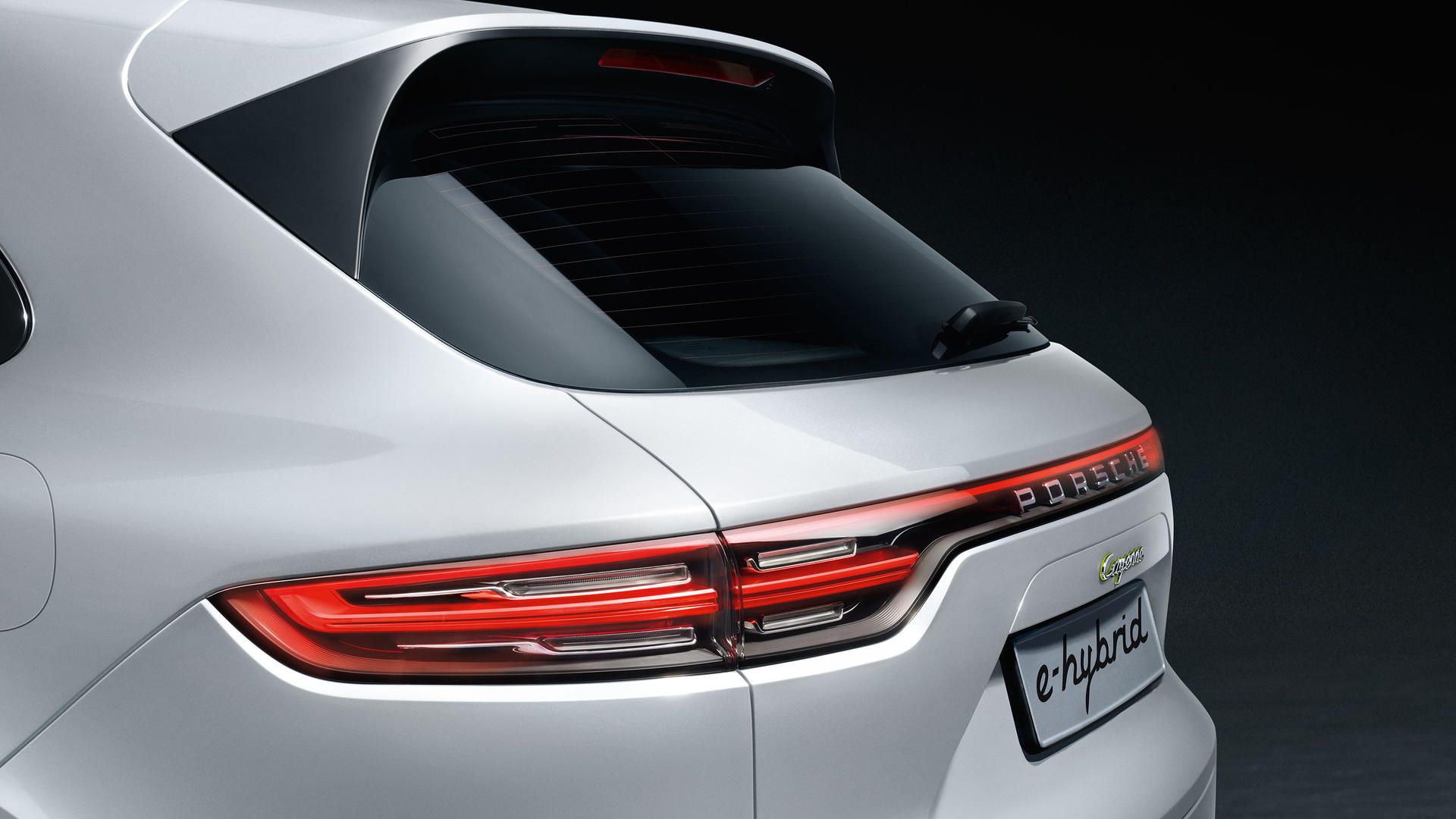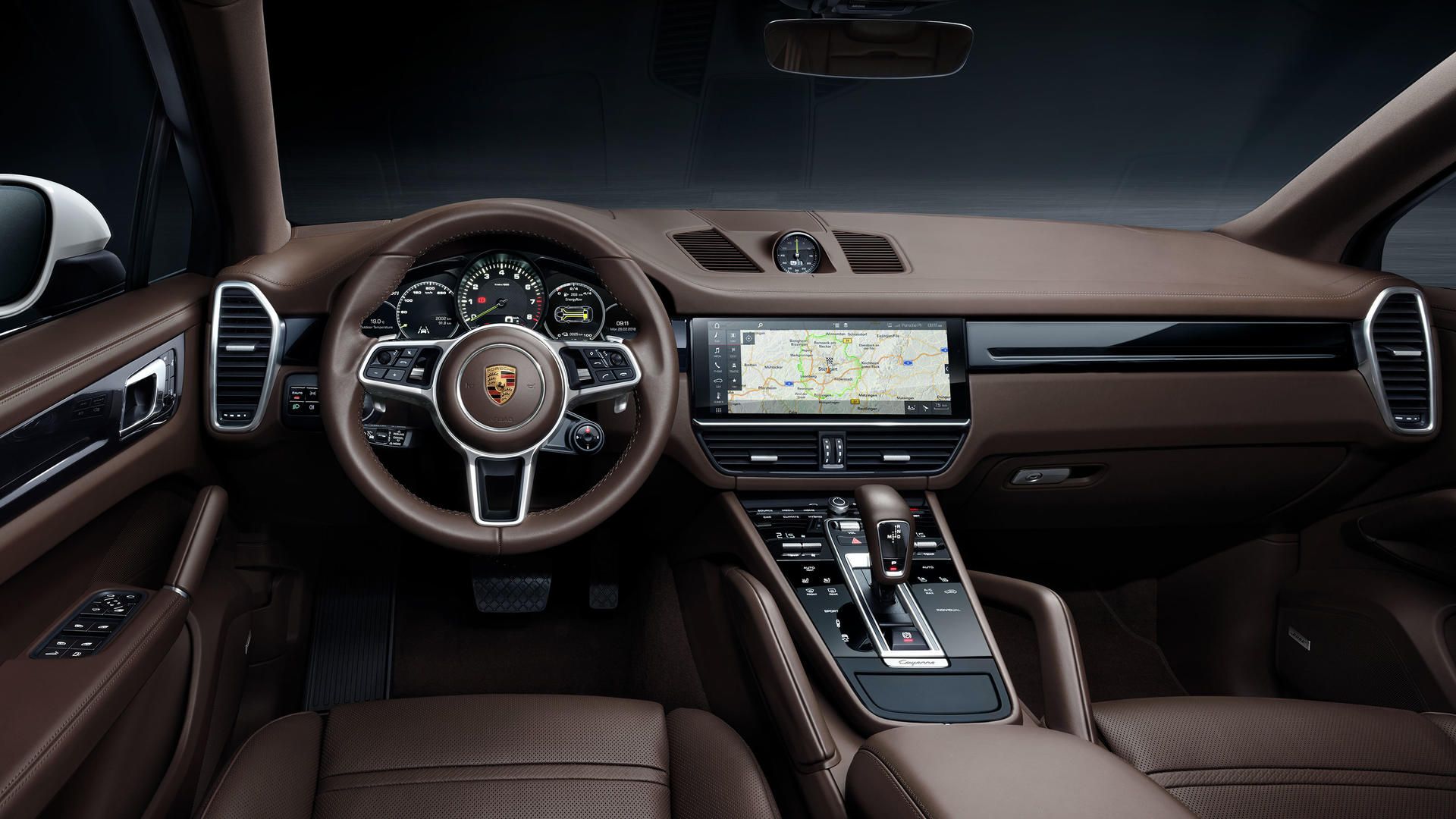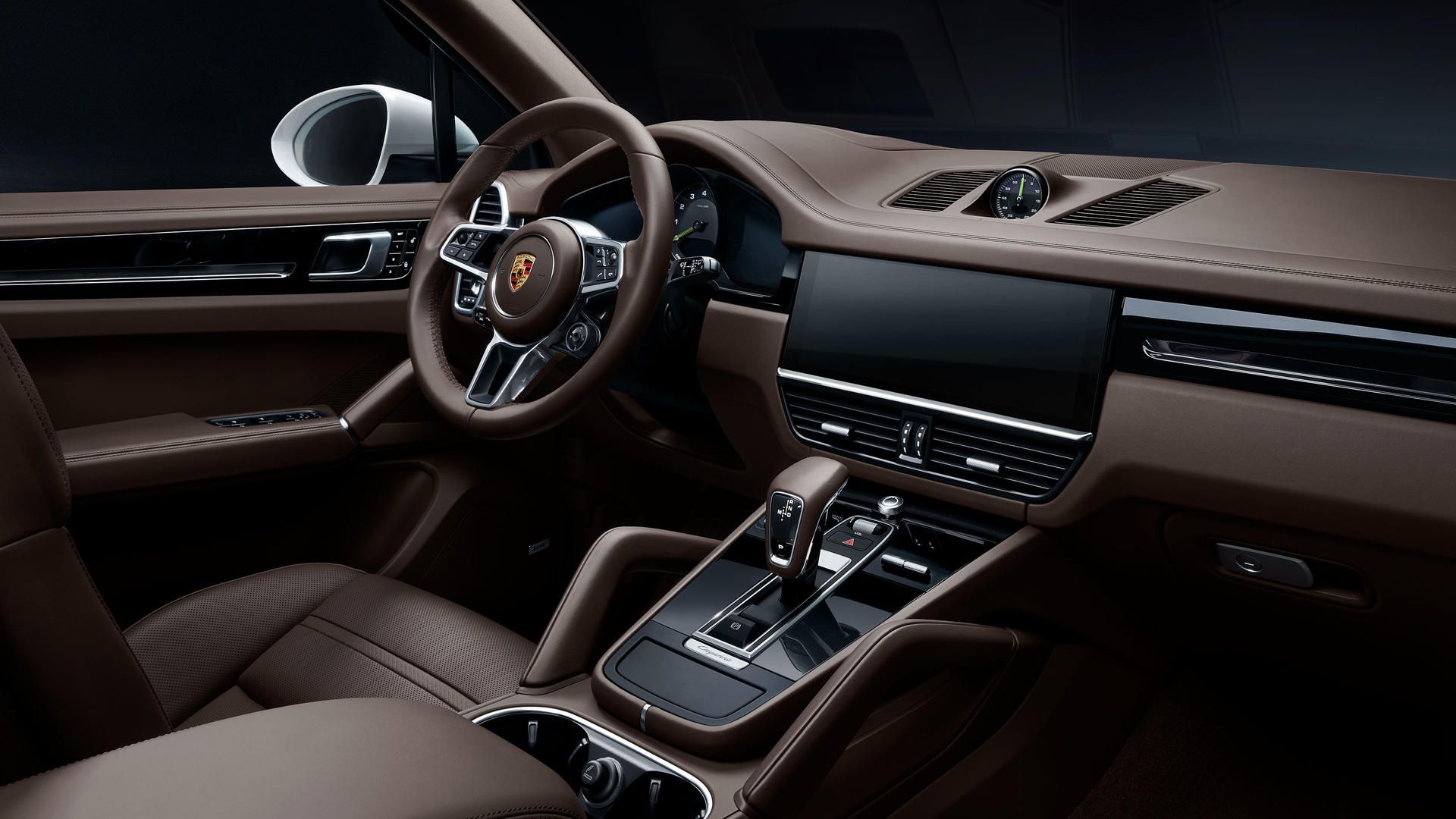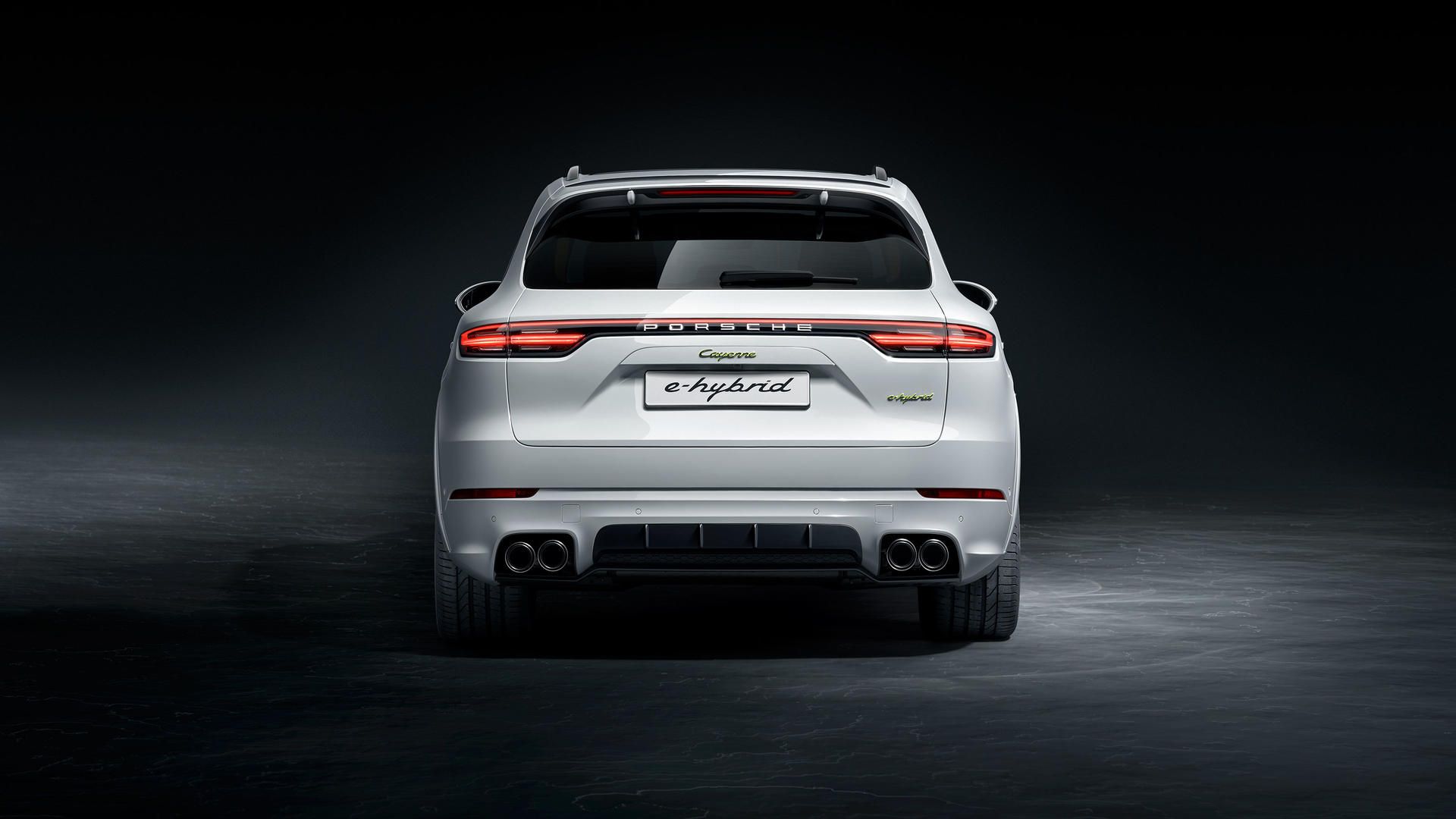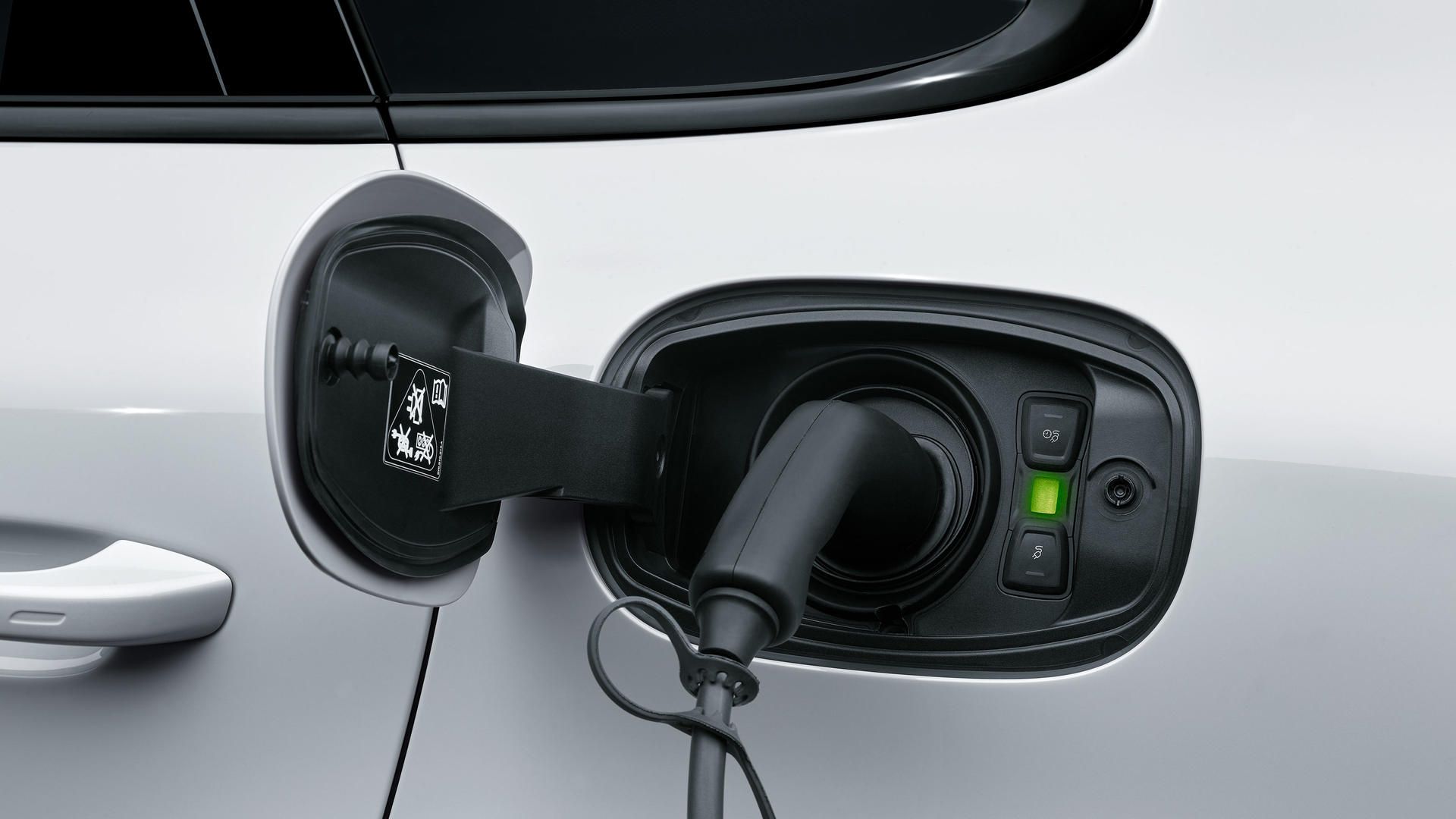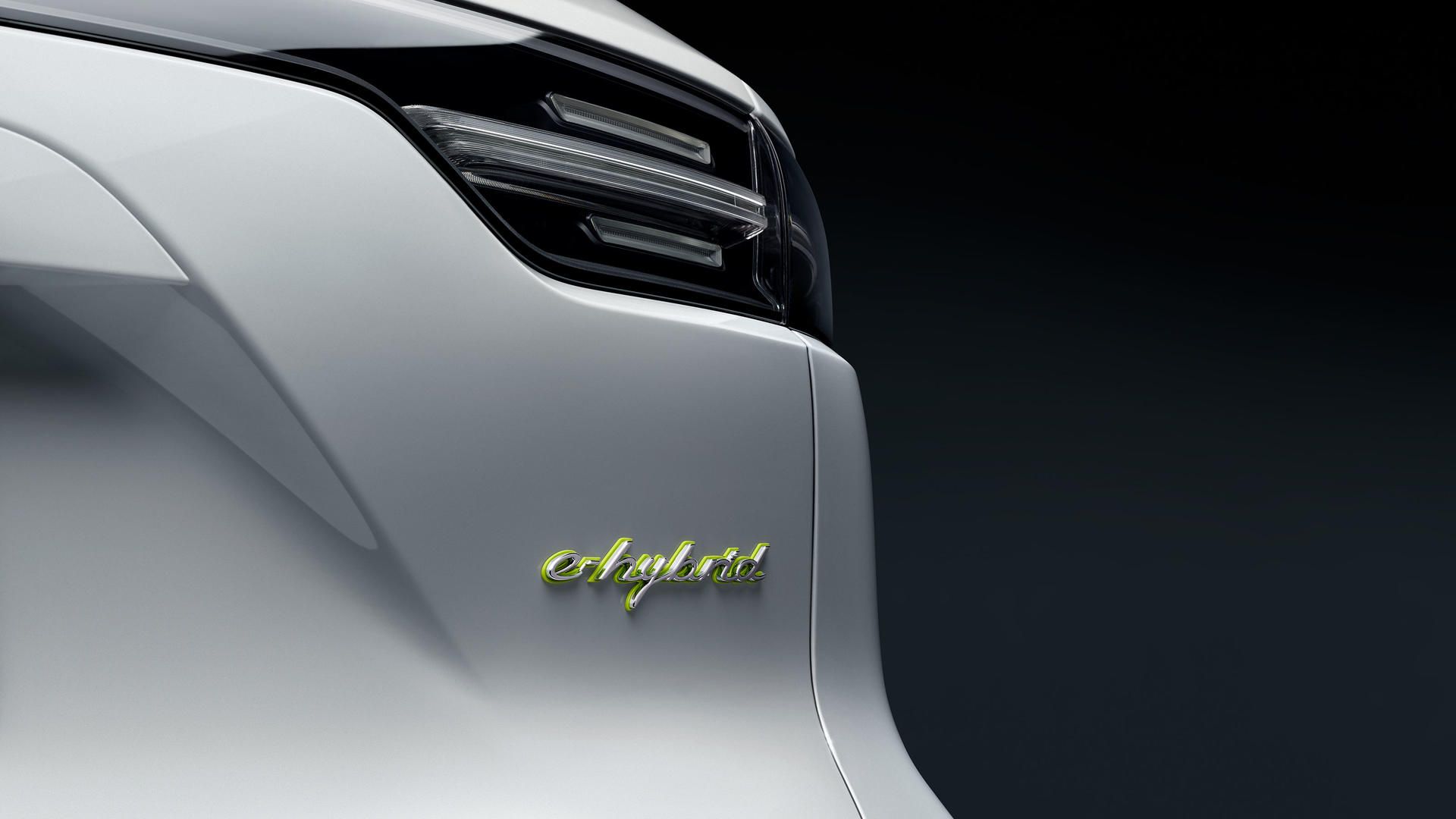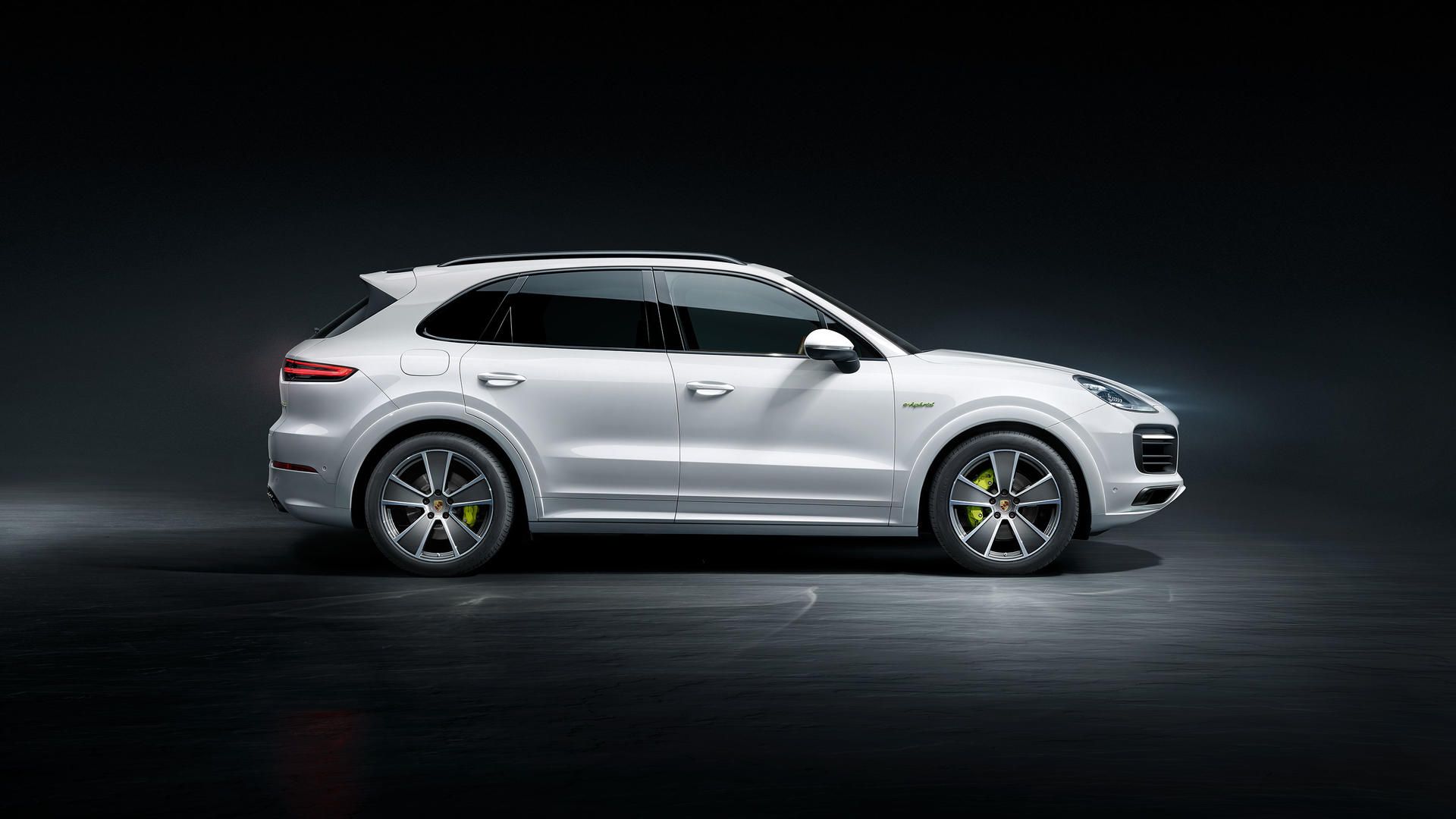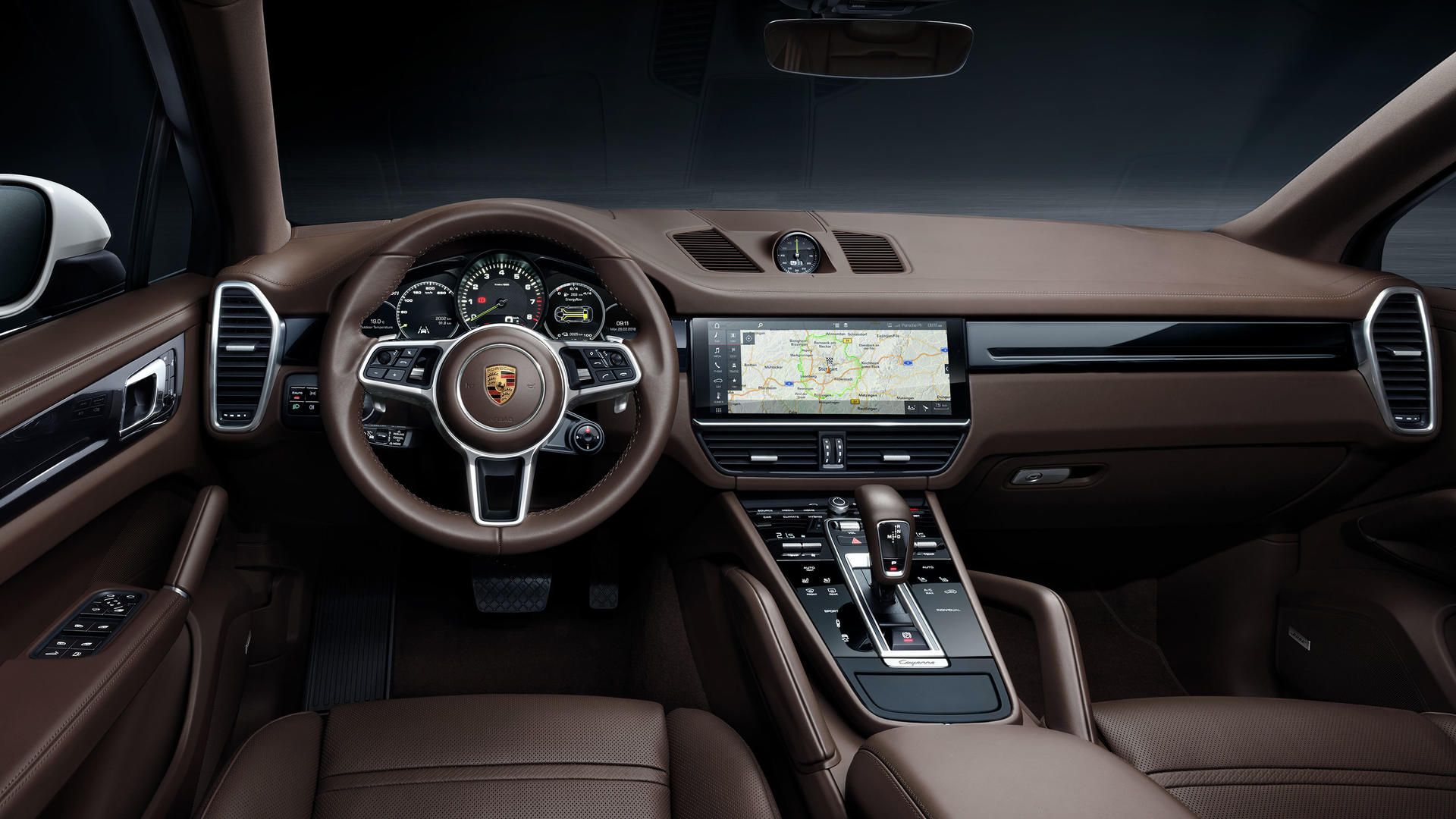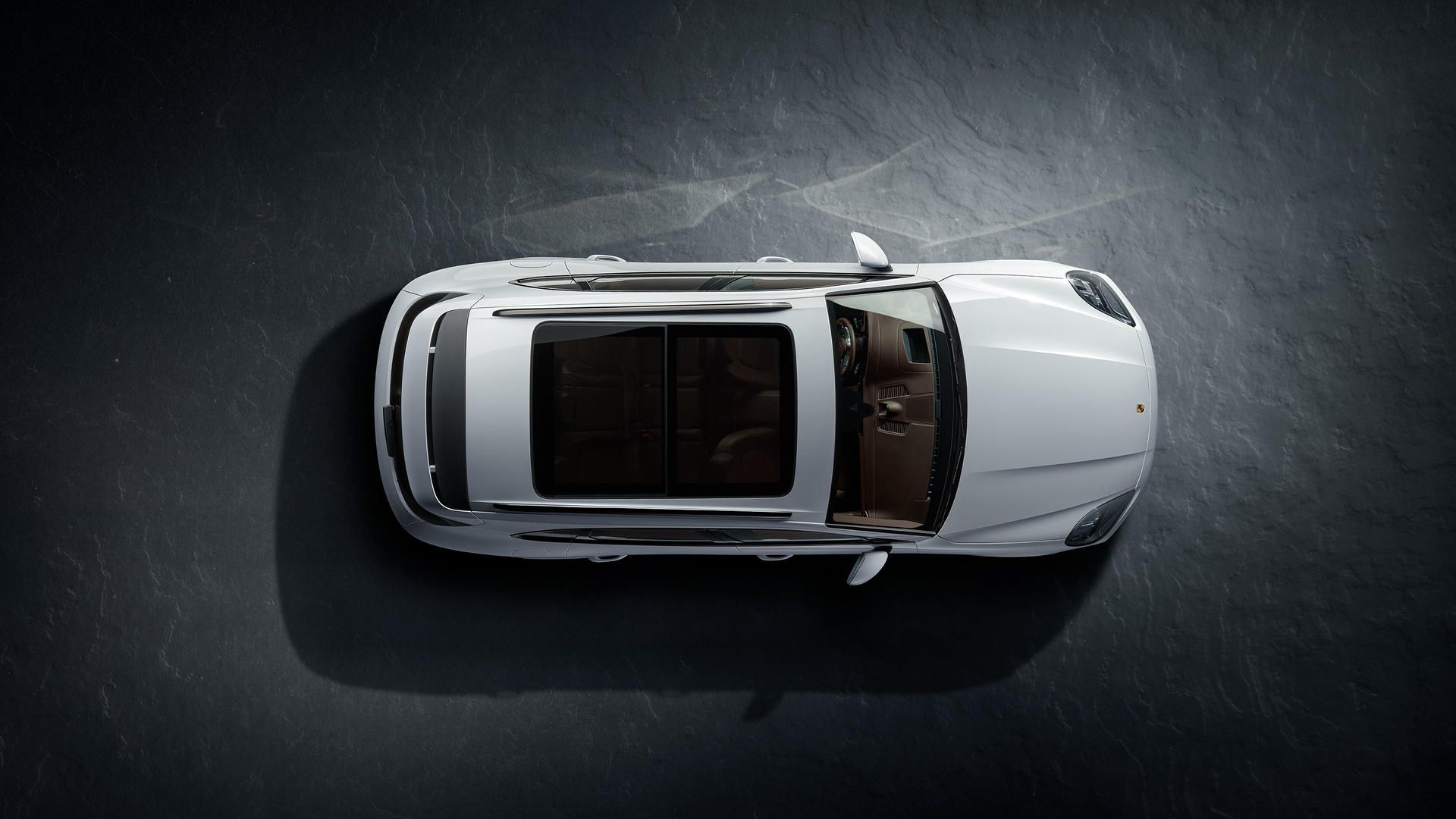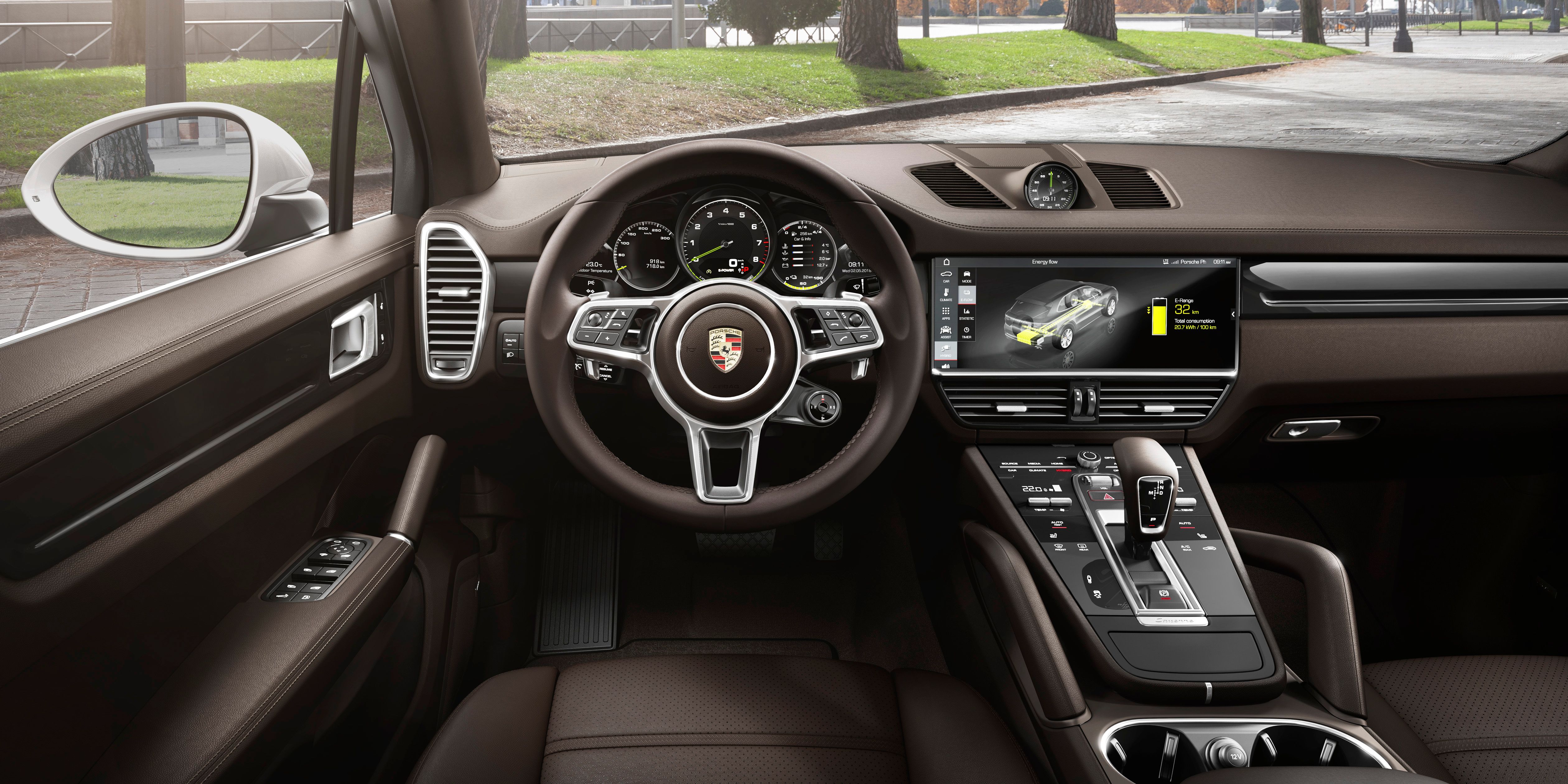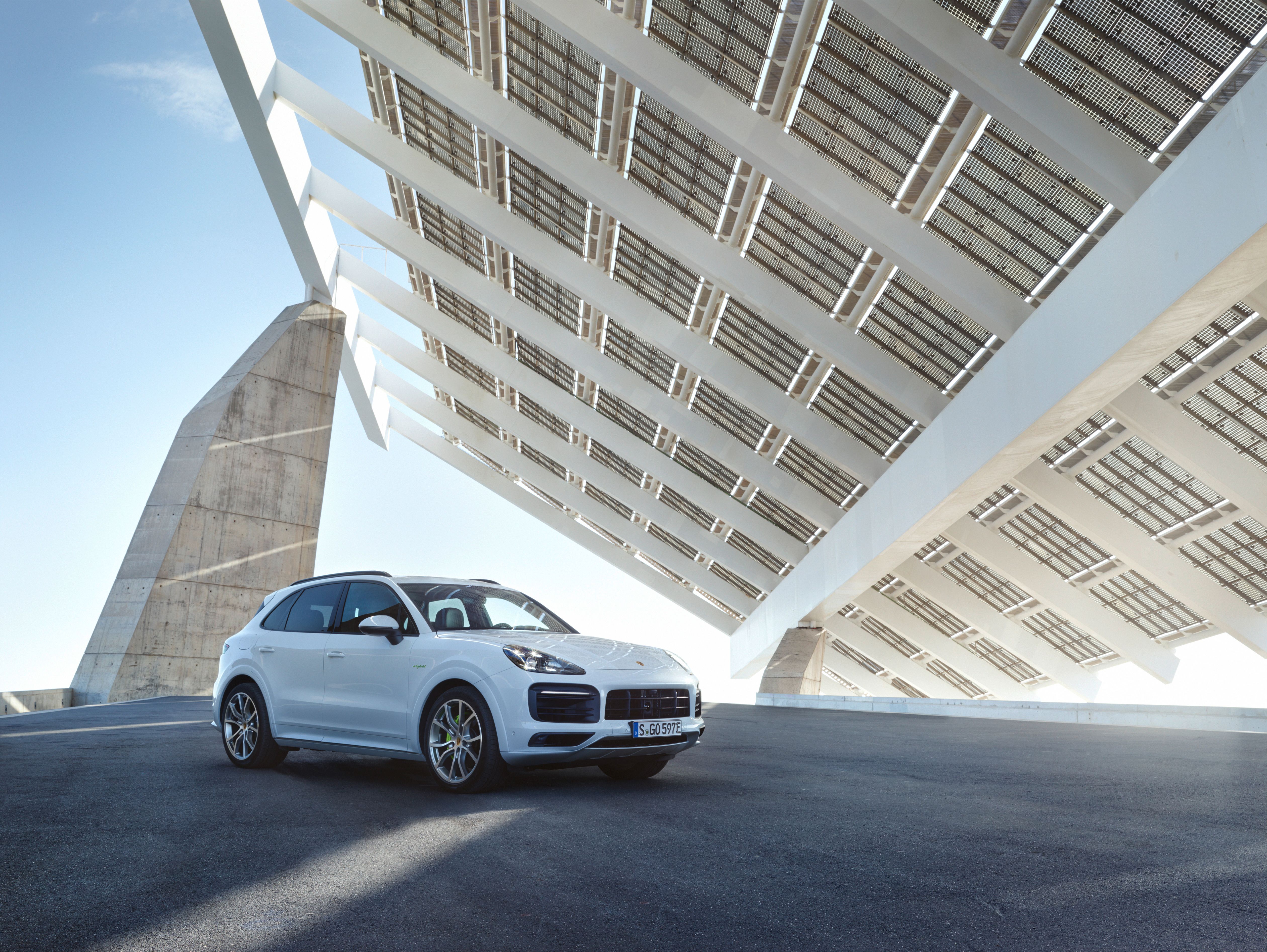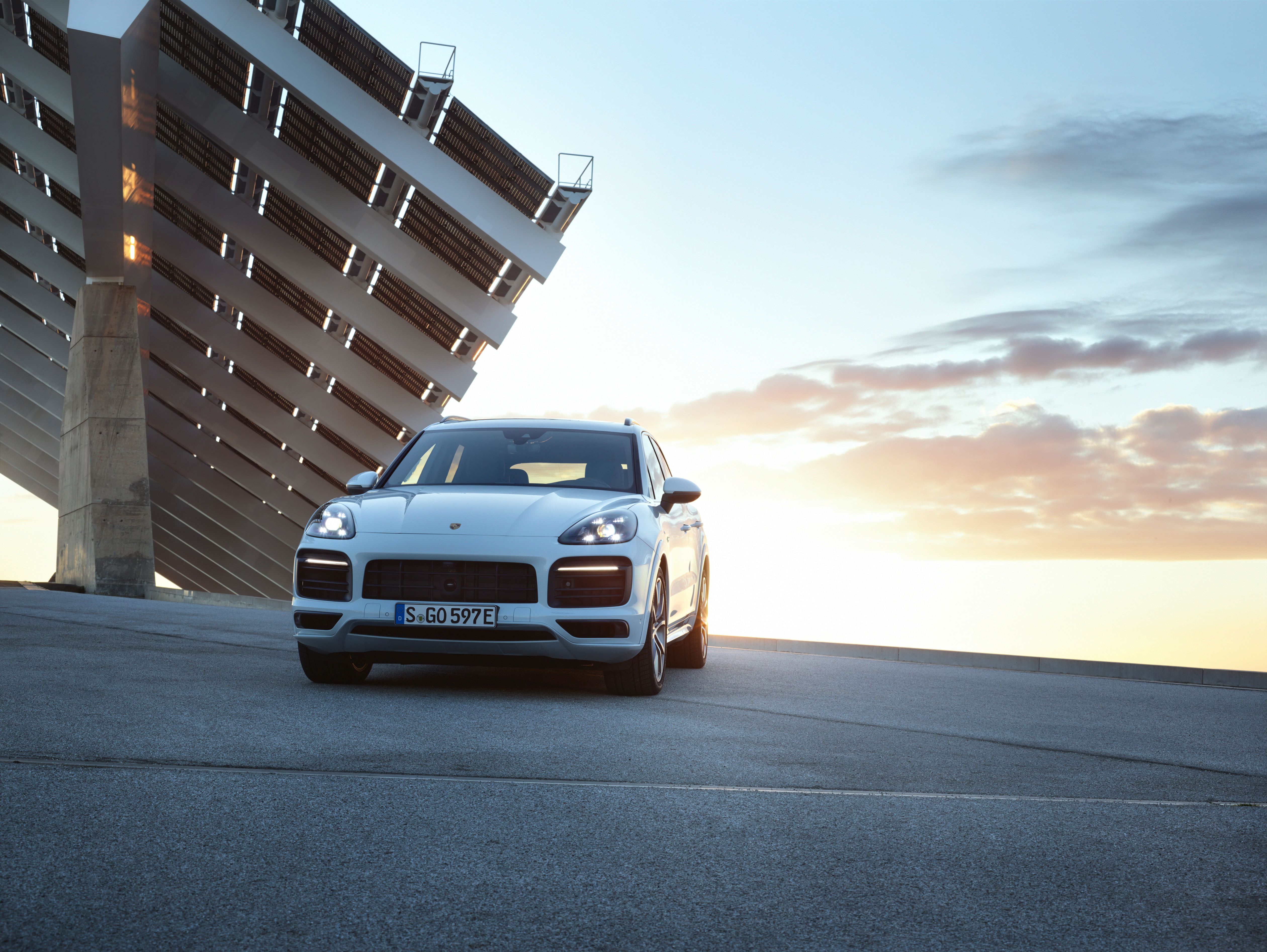Porsche updated the Cayenne for the 2018 model year, but the hybrid version wasn’t quite ready. Now that the 2019 models are about to roll into dealers, Porsche has finally pulled the covers off of the new 2019 Porsche Cayenne E-Hybrid, a direct replacement for the Cayenne S E-Hybrid. It brings some serious improvements to the table over its predecessor and the standard Cayenne too. We’re talking about things like faster acceleration, more electric range, better efficiency, and increased power, among other things. It also brings all of the new styling cues and technology introduced with the 2018 Cayenne to the hybrid market.
2019 Porsche Cayenne E-Hybrid
- Make: Array
- Model: 2019 Porsche Cayenne E-Hybrid
- Engine/Motor: V6
- Horsepower: 455 @ 5250
- Torque: 516 @ 3750
- [do not use] Vehicle Model: Array
<
2019 Porsche Cayenne E-Hybrid Exterior Design
There is absolutely nothing that separates the E-Hybrid from the standard Cayenne, with the exception of the charging port door on the rear, driver’s side. Otherwise, it carries the same front fascia, hood fenders, and body lines from front to rear. Not that this is necessarily a bad thing. The E-Hybrid benefits from a sleek set of headlights, function front, and rear fascias, and it’s got those attractive body lines on the sides. There is a big panoramic roof as well. Compared to the model it replaces, it ditches the budget-looking underplates, it has the modern taillights, and its proportions are just a bit better than before. It’s about time because the last hybrid model has been around since 2015 and a new look was certainly needed.
2019 Porsche Cayenne E-Hybrid Interior Design
Visually, the interior of the E-Hybrid is the exact same as that of the standard model. One can assume, then, that the interior space will be the same as well. It gets the same 12.3-inch display built into the center stack, the same touch controller on the center console, and the same trim goodies throughout. Where it stands out, however, is in the technology department. First off, the PCM (Porsche Communication Management) system can be used to control the charging process. This can also be done with the Porsche Connect app, as well as monitoring of the charge status and controlling the HVAC system.
This isn’t all, though. The instrument cluster comes standard with Acid Green needles on both the Sport Chrono dial and the tachometer. There are also hybrid-specific displays in the gauge cluster and the PCM screen that relate to the state of charge, amount of energy consumers, and the status of various drive modes. A head-up display is available for an extra fee, which will place pertinent information straight ahead, eliminating the need to glance away from the road while driving. If you opt for the Sport Chrono package, you’ll also get the performance pages that include lap times and cornering forces. The off-road package will provide pages with information regarding hill grades, steering angle, status of the hill descent control system, and even a compass, so you don’t get lost should the navigation system fail for some reason.
2019 Porsche Cayenne E-Hybrid Performance and Range
The Porsche Cayenne E-Hybrid stands out of the lineup by pairing the standard 3.0-liter, turbocharged, V-6 with an electric motor unit. The electric motor, or as Porsche calls it, a Hybrid module, actually sits between the engine and transmission. Instead of using an electro-hydraulic actuator to separate the module from the engine and transmission Porsche decided to go with an all-out, electromechanical clutch. This should allow for quicker reaction time when engaging and disengaging. The engine delivers 335 horsepower and 332 pound-feet of torque while the electric motor delivers 134 horsepower and 295 pound-feet of torque. Total system output is rated at 455 horsepower between 5,250 and 6,400 rpm and 516 pound-feet of torque that maxes out between 1,000 and 3,750 rpm.
The end result of this power is a big improvement over the outgoing model. There’s a 0.7-second improvement in the time it takes to get to 60 mph, 0.9-second improvement in the quarter-mile run, and an increase of 6 mph in top speed. That means the new E-Hybrid can run to 60 mph in 4.7 seconds on the way to a top speed of 157 mph. The quarter mile? That comes in at 13.3 seconds if you hit the gas right. Power is transmitted from the engine, and subsequently the electric motor, through Porsche’s eight-speed Tiptronic S transmission. Top speed is reached in sixth gear, and all shifts are said to be faster and smoother. The seventh and eighth gears are reserved for efficient highway driving, so if you really get on it, don’t be surprised if you don’t feel those final shifts. Naturally, the E-Hybrid is AWD with dynamic torque distribution on demand and Porsche’s active suspension management system.
There are several drive modes available that include E-Power, Hybrid Auto, E-Hold, E-Charge, Sport, and Sport Plus. E-Power is all-electric mode, while hybrid auto is a new feature that is said to provide “ultimate efficiency.” E-Hold maintains battery charge, leaving motivation to come from the engine only, while E-Charge will allow the engine to act as a generator and charge the battery as you drive. Sport and sport plus turn the engine on at all times and provide the best performance possible. Sport Plus mode also charges the battery to help maintain constant performance.
As far as electric goodness goes, the battery is a 14.1-kWh unit that’s 30-percent larger than the outgoing model and can offer as much as 27.3 miles of all-electric range. If you plug into a 230-volt, 32-amp outlet with the optional 7.2 kWh charger, you can recharge the battery in as little as 2.3 hours. The standard charger is a 3.6 kW unit that delivers a full charge in 7.8 hours on a 230-volt, 10-amp connection.
2019 Porsche Cayenne E-Hybrid Pricing
The 2019 Porsche Cayenne E-Hybrid starts at $79,900 before options, taxes, and delivery. That puts it at $14,290 than the standard Cayenne, $3,000 less than Porsche Cayenne S, and $44,610 less that the Cayenne Turbo.
2019 Porsche Cayenne E-Hybrid Competition
|
Read our full review on the 2019 BMW X5. |
$65,700 |
|
Read our full review on the 2018 Mercedes GLE-Class $82,900 |
|
|
Read our full review on the 2018 Porsche Cayenne |
$124,600 |
|
Read our full review on the 2015 Porsche Cayenne S E-Hybrid. |
$79,900 |
Read more Porsche news.0
2019 BMW X5
The BMW X5 is one of the Cayenne’s main competitors. To be more specific, I’m talking about the Xdrive40e iPerformance. It’s not quite as powerful as the Cayenne E-Hybrid, but that’s because the gasoline engine is just a 2.0-liter unit. Total system output is rated at 308 horsepower and 332 pound-feet of torque. Electric range is limited to just 31 miles, and it takes 3 hours to charge the 9.2 kWh battery. It can hit 60 mph in 6.5 seconds on the way to a top speed of 130 mph. It may not be as powerful or as quick as the Cayenne, but it does come in quite a bit cheaper at $62,750 as of the time of this writing. Plus you get the good looks of the X5 to go with it, so there’s that. So the real question is whether or not you’re willing to trade off that extra power and better performance for a significantly lower pricing point.
Read our full review on the 2019 BMW X5.
Mercedes GLE-Class
Of course, this is a German shootout, so it’s only fair to throw in Merc’s resident competitor. In this case, I’m talking about the GLE 550e 4MATIC Plug-in Hybrid. It comes with all of the good looks and luxury of the GLE class but brings a greener footprint thanks to its hybrid drivetrain. The engine unit in charge is Merc’s familiar 3.0-liter, biturbo, V-6 which happens to be paired with an electric motor. Specs for the battery and motor have yet to be released, but total system output is rated at 436 horsepower and 479 pound-feet of torque. Fuel economy figures are also top secret, but it has a seven-speed transmission, all-wheel drive, and can hit 60 mph in 5.2 seconds. Pricing starts out significantly lower than the Cayenne E-Hybrid as well at $66,700, a fair price for a car that’s a bit slower and heavier.
Read our full review on the 2018 Mercedes GLE-Class
Final Thoughts
In the end, Porsche gave the Cayenne exactly what was needed when it introduced the new generation in 2018. It’s only fitting that the hybrid model comes correct with the same new looks and technology. It still feels like Porsche could have gone with a larger battery for better range, but it is a hybrid and not an all-electric, so it should suffice. What’s more important is the added performance that comes courtesy of that improved battery and electric motor. The interesting thing is that it is significantly more expensive than it’s competitors but it does offer the best performance, so the real question is whether or not the trade-off justifies paying such a higher price.
References
Read our full review on the 2018 Porsche Cayenne
Read our full review on the 2015 Porsche Cayenne S E-Hybrid.
Read more Porsche news.

